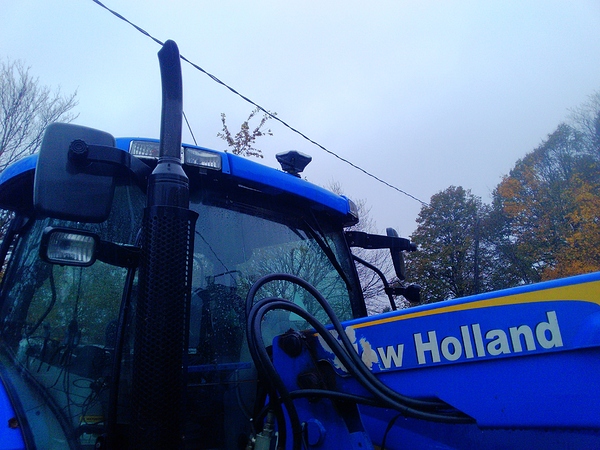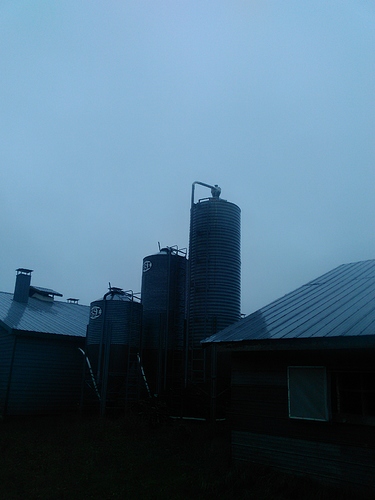Hi I am having a few issues with my Reach RS+ Base/Rover combo that I am using for Tractor guidance with AgOpenGPS. I often seem to lose my RTK fix and end up in Float a fair amount. I am pretty sure it is in the RTCM3 settings in that I have too many selected and in how the Base coordinates are configured.
My needs are:
- a constant realtime RTK fix at 5Hz
- maximum base line of 2km
- pass to pass accuracy of 2cm.
My questions for the community are:
- Which RTCM3 messages should I have enabled and at what rate to maintain overall realtime RTK fix at 5Hz. I live on the East coast of Canada.
- If I mount the base in the same spot every time, should I manually enter its position or is it best to let it average its position.
- If I am doing an average of the Base coordinates what is the best Single, Float, or Fix
- What should my minimum coordinate accumulation time be.
Firmware image 2.11.2 and ReachView version 1.4.
[details=“Simple system report”]
app version: 2.11.2-r0
'wifi_status, interface: wlan0':
- wifi_mode: ap
- access_point:
band: bg
channel: 1
password: null
ip: 192.168.42.1
is_added: true
is_connected: true
mac_address: CC:B8:A8:F5:5F:8C
security: wpa-psk
ssid: ReachBASE:5f:8c
uuid: fdd54840-8e1d-40dc-931b-9537536e87a8
base mode:
base coordinates:
accumulation: '4.6'
antenna offset:
east: '0'
north: '0'
up: '0'
coordinates:
- '0'
- '0'
- '0'
format: llh
mode: single-and-hold
output:
enabled: true
format: rtcm3
path: lora
type: lora
rtcm3 messages:
'1002':
enabled: true
frequency: '5'
'1006':
enabled: true
frequency: '0.1'
'1008':
enabled: false
frequency: '1'
'1010':
enabled: true
frequency: '5'
'1019':
enabled: false
frequency: '1'
'1020':
enabled: false
frequency: '1'
'1097':
enabled: false
frequency: '1'
'1107':
enabled: true
frequency: '1'
'1117':
enabled: false
frequency: '5'
'1127':
enabled: false
frequency: '1'
gps:
enabled: false
frequency: '5'
qzss:
enabled: false
frequency: '5'
bluetooth:
discoverable: false
enabled: false
pin: '***'
correction input:
input2:
enabled: true
format: rtcm3
path: ttyMFD2:38400:8:n:1:off
send position to base: 'off'
type: serial
input3:
enabled: false
format: rtcm3
path: :9028
type: tcpsvr
logging:
base:
format: RTCM3
started: true
version: null
correction:
format: RTCM3
started: true
version: null
interval: 24
overwrite: true
raw:
format: UBX
started: true
version: null
solution:
format: LLH
started: true
version: null
lora:
air rate: '18.23'
frequency: 908200
output power: '20'
position output:
output1:
enabled: true
format: nmea
path: bluetooth
type: bluetooth
output2:
enabled: true
format: llh
path: :9001
type: tcpsvr
output3:
enabled: true
format: llh
path: :2014
type: tcpsvr
output4:
enabled: true
format: llh
path: :2015
type: tcpsvr
rtk settings:
elevation mask angle: '15'
glonass ar mode: 'off'
gps ar mode: fix-and-hold
max horizontal acceleration: '1'
max vertical acceleration: '1'
positioning mode: kinematic
positioning systems:
compass: false
galileo: false
glonass: true
gps: true
qzs: true
qzss: true
sbas: true
snr mask: '35'
update rate: '5'
Rover is mounted to the tractor cab roof.
Base is mounted on top of the tallest grain tank. There is potential that it may sway in the wind.
!!






